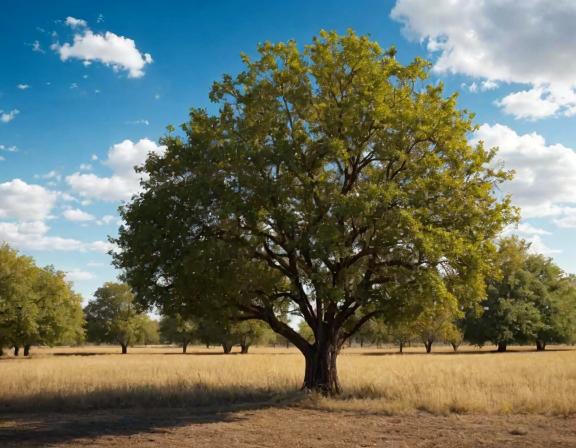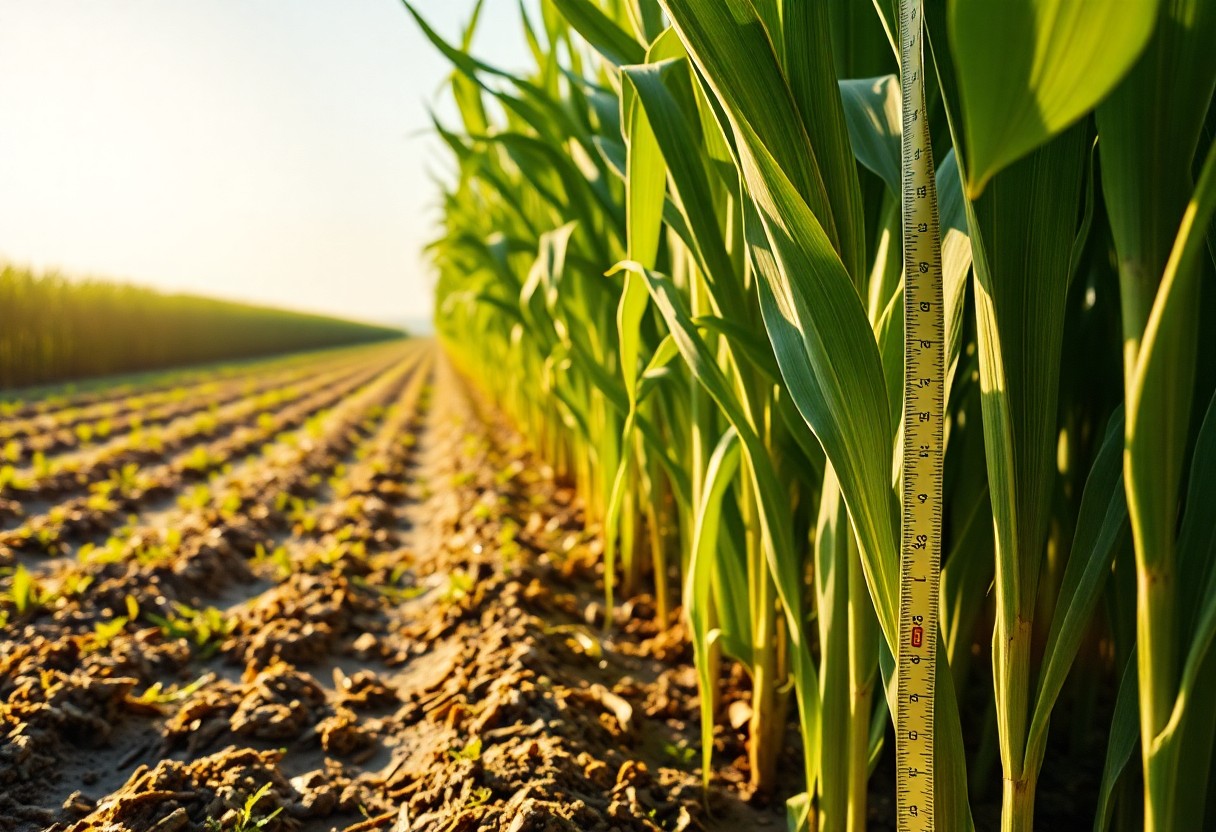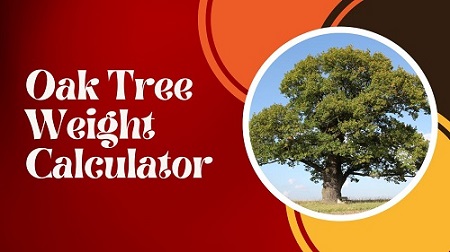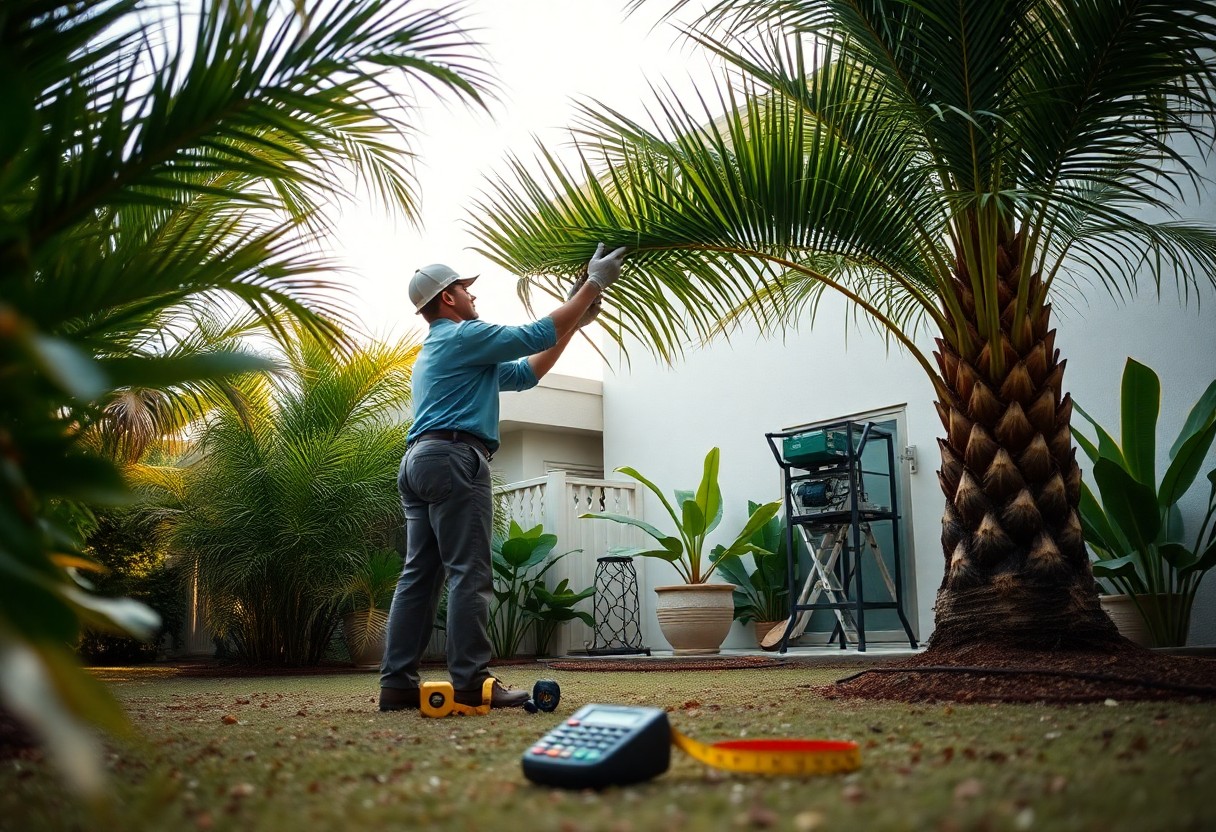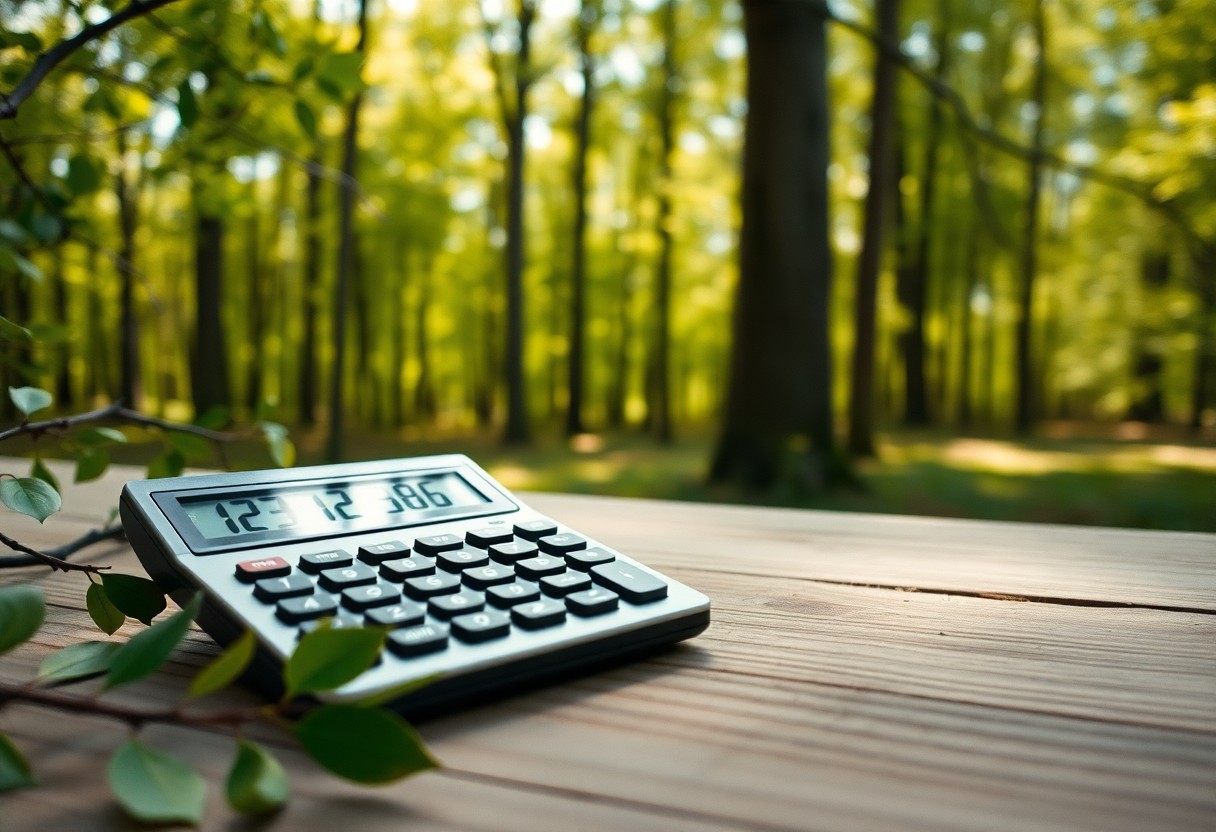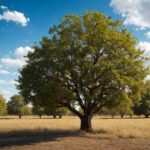Over the years, proper apple tree spacing has emerged as a critical factor in optimizing yield and promoting overall tree health.
Understanding how to effectively calculate the ideal distance between your trees is important for ensuring they receive adequate sunlight, air, and nutrients.
This guide will walk you through the importance of spacing, factors to consider, and how a tree spacing calculator can help you achieve a flourishing orchard that maximizes fruit production.
Apple Tree Spacing Calculator
With a row spacing of feet and a tree spacing of feet, there will be approximately apple trees per acre.
Understanding the Role of Spacing in Apple Tree Cultivation
The right spacing between apple trees plays a crucial role in enhancing their overall health and productivity. By allowing sufficient room, you ensure that each tree receives adequate sunlight, airflow, and nutrients, which are necessary for maximizing fruit yield.
Properly spaced trees minimize competition for resources, reduce disease risk, and promote robust growth, leading to a bountiful harvest season after season.
The Relationship Between Spacing and Airflow
Any successful orchard benefits from sufficient airflow between trees, which is important for preventing diseases and promoting healthy growth.
Proper spacing allows air to circulate freely, reducing humidity levels and minimizing the risk of fungal infections. When trees are too close together, airflow is restricted, making them more vulnerable to pest infestations and diseases that thrive in stagnant conditions.
Impact on Sunlight Exposure
Relationship between optimal spacing and sunlight exposure cannot be overstated. Each apple tree requires adequate sunlight for photosynthesis, which is critical for growth and fruit development. When trees are too close together, they shade one another, resulting in reduced light availability that can significantly hinder their productivity and overall health.
Spacing your apple trees correctly ensures that each tree captures enough sunlight throughout the day. For instance, maintaining distances of 8 to 12 feet for dwarf varieties and 18 to 25 feet for standard trees allows light to penetrate, enhancing photosynthesis and increasing your trees’ fruit output by up to 30%. This attention to spacing reflects a commitment to maximizing the potential yield of your orchard.
Effect on Soil Nutrient Distribution
Spacing between apple trees also impacts soil nutrient distribution crucially. When trees are planted too closely, their root systems compete for nutrients and water, which can lead to stunted growth and lower fruit quality. Adequate spacing allows roots to expand freely, ensuring each tree accesses the nutrients it needs to thrive.
Between sufficiently spaced trees, there’s less competition for soil nutrients, leading to healthier, robust root systems.
This optimal root growth enhances overall tree vigor and encourages better nutrient uptake from the soil. By ensuring the right distances based on the type of apple tree you plant, you can cultivate a highly productive orchard that thrives on nutrient availability.
Importance of Proper Apple Tree Spacing
You may not realize it, but the space between your apple trees plays a crucial role in their overall health and productivity.
Proper spacing ensures that each tree receives adequate sunlight, air circulation, and nutrients, which are crucial for optimal growth.
When trees are positioned correctly, they are less susceptible to diseases, pests, and competition for resources, potentially increasing their yield by up to 30%. Understanding and implementing the right spacing can set your orchard up for long-term success.
Health Benefits for Apple Trees
To maximize the health of your apple trees, proper spacing is crucial. Adequate distance allows sunlight to reach each tree effectively, promoting photosynthesis. Furthermore, improved airflow reduces the risk of fungal diseases and pests, enabling your trees to thrive without unnecessary stress.
Maximizing Fruit Yield and Quality
Quality fruit production is directly linked to how well apple trees are spaced. Proper positioning prevents overcrowding, ensuring that each tree can access the nutrients, water, and sunlight required for robust growth.
Maximizing the yield and quality of your apple harvest depends significantly on proper tree spacing. When trees are spaced appropriately, they not only grow stronger but also produce higher-quality fruit. With adequate room to develop, trees can flourish, leading to better fruit size, taste, and overall health. Moreover, when trees are not competing for resources, they are more likely to produce a bountiful and delicious harvest season after season.
Long-term Orchard Sustainability
Health and sustainability are vital for the longevity of your orchard. Proper spacing among apple trees helps maintain their vigor and ensures they remain productive for years to come.
Apple trees thrive best in an environment where they can grow without competition. By implementing the right spacing, you not only support the immediate health of your trees but also contribute to their long-term sustainability. This thoughtful approach reduces the need for chemical treatments, promotes biodiversity, and leads to a more resilient ecosystem, ultimately ensuring your orchard can provide fruitful harvests for generations.
Calculating Ideal Apple Tree Spacing
All successful orchards begin with proper spacing, necessary for optimizing sunlight, airflow, and nutrient access for your apple trees. To create a thriving environment that promotes maximum yield, it’s important to calculate the ideal distance based on your specific apple tree variety and local growing conditions.
Factors to Consider in Spacing Calculations
On deciding how far apart to plant your apple trees, consider the following factors:
- Mature tree size (dwarf, semi-dwarf, or standard)
- Soil type and quality
- Local climate and weather patterns
- Available sunlight and water sources
Recognizing these factors helps you refine your spacing decisions for healthier, more productive trees.
Using Formulae for Space Calculation
An effective way to determine tree spacing is to utilize specific formulae tailored to your tree varieties and conditions. These calculations can assist in achieving optimal distances, improving air circulation and sunlight exposure.
A common formula to estimate spacing is to take the mature width of your tree and multiply it by a factor for proper spacing—typically 1.5 to 2 times the width. This technique allows you to easily adjust spacing requirements based on the variety you choose.
Tools and Technologies for Spacing Calculations
Apple growers can greatly benefit from modern tools and technologies designed for spacing calculations. Utilizing a tree spacing calculator can streamline the planning process, ensuring you make informed decisions based on your unique orchard conditions.
Another option is to explore mobile apps and online calculators that consider various parameters, such as tree type and soil conditions, providing recommendations that are tailored to your specific needs. Investing in these tools enhances your orchard’s productivity and sustainability over time.
Apple Tree Varieties and Their Spacing Requirements
After selecting the right apple tree variety, understanding their specific spacing needs is crucial for maximizing your orchard’s yield. Different varieties, including dwarf, semi-dwarf, and standard apple trees, have unique requirements based on their growth habits and mature size. Proper spacing ensures each tree receives adequate sunlight, air, and nutrients, leading to healthier plants and better fruit production.
Dwarf Apple Trees: Characteristics and Spacing
The dwarf apple trees are compact and well-suited for small spaces, typically requiring a spacing of 8 to 12 feet apart. This closer spacing allows you to maximize your available area while ensuring each tree has enough room to thrive.
Semi-Dwarf Apple Trees: Recommended Distancing
Spacing is imperative for semi-dwarf apple trees, which should be planted 12 to 18 feet apart. This distance enables them to grow well without overcrowding, ensuring they have access to resources like sunlight and nutrients.
Recommended distances for semi-dwarf apple trees ensure that each tree receives adequate airflow and sunlight. By providing 12 to 18 feet of space, you enhance their growth potential and fruit yield, making your orchard not only more productive but also easier to manage.
Standard Apple Trees: Traditional Spacing Guidelines
The standard apple trees, being the largest variety, require more space, ideally 18 to 25 feet apart. This substantial distance allows them to spread their branches and roots effectively, contributing to overall tree health and productivity.
Standard guidelines suggest that when planting standard apple trees, you allocate 18 to 25 feet of spacing. This not only prevents overcrowding but also promotes better sunlight penetration and airflow, crucial factors for healthy growth and high fruit quality in your orchard.
Site-Specific Factors Influencing Tree Spacing
To optimize your apple tree spacing, consider site-specific factors that can significantly impact their growth and yield. Assessing these elements will ensure your trees thrive in their environment. Key considerations include:
- Soil composition and drainage
- Climatic conditions and regional variations
- Topography and its effect on orchard design
This approach helps you create a healthy and productive orchard that maximizes fruit production.
Soil Composition and Drainage
An ideal orchard starts with understanding your soil’s composition and drainage characteristics. Nutrient-rich, well-draining soil allows for closer planting, as trees can access necessary resources without competition. In contrast, compacted or poor soils require greater spacing to ensure that each tree has adequate access to nutrients and water.
Climatic Conditions and Regional Variations
Drainage plays a crucial role in determining how closely you can plant your apple trees. If your region experiences heavy rainfall, well-drained soil is necessary to prevent root rot and other diseases. In drier climates, trees may require more space to capture and retain moisture effectively.
Variations in climate significantly affect orchard design and tree spacing. Factors such as temperature extremes, humidity, and wind patterns can influence how close your apple trees should be. For example, in areas with harsh winters, providing additional space can help trees resist damage, while milder climates may allow for slightly closer planting arrangements.
Topography and Its Effect on Orchard Design
Orchard layout should also consider topography, as the land’s slope can affect air flow, water drainage, and sunlight exposure. Trees on a slope may require wider spacing to accommodate for variations in moisture retention and sun exposure, while flat areas may allow for more compact arrangements.
For instance, if your orchard is located on a hillside, planting trees too close together can lead to increased competition for nutrients and moisture, especially if water drains unevenly. Understanding your land’s topography empowers you to make informed spacing decisions, enhancing tree health and overall yield.
Designing an Efficient Orchard Layout
All successful orchards begin with a well-thought-out layout. Proper design maximizes space usage, enhances light exposure, and facilitates airflow, all contributing to the health and productivity of your apple trees. You should consider tree spacing requirements based on variety, soil quality, and climate conditions to ensure that every tree thrives. Utilizing tools like a tree spacing calculator helps in achieving an optimal orchard design while preventing overcrowding and promoting long-term yields.
Traditional vs. Modern Orchard Layouts
Efficient orchard layouts balance traditional practices with modern techniques. While traditional orchards often feature large tree spacing to promote sunlight and air circulation, modern designs may employ closer spacing to maximize planting density and use advanced cultivation methods. Understanding the pros and cons of both can help you make an informed choice that fits the specific needs of your apple trees and growing conditions.
Row Orientation and Its Impact on Spacing
Traditional orchard designs often focus on the orientation of rows, which significantly influences tree spacing. By aligning rows northeast to southwest, you can maximize sunlight exposure throughout the day, enhancing photosynthesis and fruit production. This orientation allows you to space your trees appropriately, ensuring each one receives adequate light while enabling optimal airflow to reduce disease risk.
This strategic row orientation provides a framework for determining how far apart your apple trees should be. Remember to consider the mature size of your specific tree varieties when calculating tree spacing, as some will require greater distances than others. Consistently maintaining proper spacing in the rows will ensure healthy growth and high yields in your orchard over time.
Incorporating Companion Planting Techniques
One innovative strategy for enhancing your orchard’s productivity involves companion planting. By growing compatible plants alongside your apple trees, you can naturally deter pests, improve soil health, and promote biodiversity. This method allows you to maximize the use of your land while promoting the overall health of your apple trees.
Orchard planning can greatly benefit from integrating companion planting techniques. For example, planting nitrogen-fixing plants can enrich the soil, while herbs can attract beneficial insects that prey on common pests. This synergistic approach not only optimizes your space but also ensures that your apple trees thrive in a healthier ecosystem, ultimately boosting your orchard’s yield and sustainability.
Planning the Planting Process
Your journey to a thriving apple orchard begins with careful planning. This involves calculating the ideal spacing for your apple trees based on their varieties and the specific conditions of your site. By understanding the unique requirements of each type, you can ensure optimal growth and fruit production throughout the life of your trees.
Pre-Planting Site Preparation
An vital part of planning your orchard involves thoroughly preparing your site. Clear any debris, check soil quality, and amend it as necessary to create an inviting environment for your apple trees. This groundwork supports robust growth and minimizes competition for nutrients, helping your trees achieve maximum productivity.
Marking Planting Spots Using Calculated Spacing
Marking your planting spots ensures that each apple tree has the space it needs to thrive. Using a tape measure or stakes, carefully outline the calculated spacing to reflect the mature size of the different apple tree varieties you plan to plant. This step is crucial for preventing overcrowding and promoting air circulation.
Using accurate measurements, take the time to create a visual layout of your orchard. For example, if you are planting standard apple trees that require 18 to 25 feet of spacing, mark each spot clearly to ensure that you maintain proper distances. This systematic approach not only enhances tree health but also makes future maintenance easier.
Adapting Planting Techniques for Different Varieties
Different apple tree varieties require tailored planting techniques to maximize their growth potential. Understanding the unique characteristics of dwarf, semi-dwarf, and standard trees will help you choose appropriate depths and soil types for each variety, which is vital for their long-term success.
For instance, dwarf apple trees thrive in shallower planting with careful attention to moisture levels; semi-dwarf varieties enjoy slightly deeper placements with adequate spacing for air circulation, while standard trees benefit from substantial room to spread. Adjusting your techniques based on these unique needs will foster healthier trees and improve your orchard’s overall productivity.
Practical Steps for Planting Apple Trees
Despite the excitement of planting apple trees, following practical steps is important for success. Begin by selecting the right varieties based on your space and climate conditions. Use a spacing calculator to determine appropriate distances based on tree size, ensuring proper sunlight, air flow, and nutrient access. Proper planting techniques will set the foundation for a fruitful orchard.
Preparing the Soil for New Trees
For optimal growth, start by preparing the soil in your orchard. Test the soil for nutrients and pH levels to ensure it supports healthy apple tree development. Loosen the soil with a spade or tiller, removing rocks and debris to create a well-draining environment that promotes root growth.
Techniques for Proper Tree Placement
Trees should be planted in a manner that allows them to thrive in their designated space. Position them according to the recommended spacing guidelines for your variety, ensuring they have enough room to grow without overcrowding. Consider incorporating a triangular placement pattern for more efficient use of space.
With careful attention to placement, each apple tree can access adequate sunlight and nutrients, allowing for healthy growth. By spacing trees according to their mature size—8-12 feet for dwarfs, 12-18 feet for semi-dwarfs, and 18-25 feet for standard varieties—you enable them to flourish and produce higher yields.
Watering and Initial Care Post-Planting
Soil moisture is crucial during the first weeks after planting. After placing your apple trees in the ground, water them thoroughly to support the establishment of their roots. Maintain consistent moisture without overwatering, which can lead to root rot or other diseases.
Trees need regular care to adjust to their new environment. You should check the moisture levels in the soil daily and provide supplemental watering as required, especially in dry conditions. Mulching around the base can help retain moisture and regulate soil temperature, fostering a healthy start for your new apple trees.
Maintenance of Proper Spacing Over Time
Not maintaining proper spacing as your apple trees grow can lead to significant issues such as reduced fruit yield and increased disease susceptibility. As trees mature, their canopy expands, necessitating regular assessment of their spacing. By actively managing the distances between your trees, you’ll foster a healthier orchard environment that maximizes productivity and minimizes potential problems.
Pruning Practices to Ensure Optimal Growth
An necessary practice in maintaining apple tree spacing is regular pruning. By trimming back branches, you not only keep the canopy contained but also promote air circulation and sunlight penetration. This will aid in maintaining optimal growth for each tree, ensuring they receive the necessary resources to thrive throughout their lifecycle.
Monitoring Growth and Spacing Adjustments
Practices such as routinely measuring the distance between trees and observing their growth patterns are key to making spacing adjustments. You should regularly inspect your orchard to ensure that tree canopies aren’t overlapping, which can lead to competition for resources and lower overall yield. Taking proactive steps can help you maintain healthy spacing over time.
With careful monitoring, you can adjust spacing as needed by either pruning back branches or even relocating trees if overcrowding occurs. Keeping a detailed growth record for your trees will also assist in making informed decisions about when and how to adjust spacing effectively.
Strategies to Combat Overcrowding
Practices such as timely thinning of your trees and strategic use of pruning can effectively combat overcrowding in your orchard. Implementing these strategies ensures each apple tree has adequate space to grow without competing for sunlight and nutrients, thus promoting better health and productivity.
Monitoring your trees closely will reveal any signs of overcrowding before they become critical issues. If trees are too close together, consider relocating some to more appropriate spaces or pruning excess branches to alleviate competition, ensuring your orchard remains healthy and flourishing.
Challenges in Maintaining Apple Tree Spacing
Keep in mind that maintaining proper spacing between apple trees presents several challenges. As your trees grow, they require continuous attention to ensure they don’t become overcrowded. Over time, inadequate spacing can lead to a myriad of issues, impacting not only the yield but also the overall health of your orchard. You need to stay proactive in monitoring their growth and implementing effective management strategies to sustain optimal spacing.
Pests and Diseases Impacting Tree Health
Tree health can be significantly compromised by pests and diseases when proper spacing is neglected. Overcrowded conditions create an environment that fosters the spread of harmful organisms, making it necessary to identify and treat issues timely to protect your harvest.
Environmental Stress Factors
Challenges arise from environmental stress factors that can affect your apple trees’ spacing requirements. These include soil quality, climate extremes, and water availability, all of which can lead to competition among trees for necessary resources. It’s important to consider these factors to mitigate stress and support healthy growth.
- Soil type quality influences nutrient access.
- Climate conditions dictate spacing needs for resource sharing.
- Water availability is critical for optimal tree growth.
Recognizing the varying demands of your trees based on these stress factors will help you adjust your spacing strategy for maximum productivity.
Managing Competing Vegetation
Tree health can also suffer from competing vegetation that encroaches on your apple trees. Weeds and other plants can siphon off nutrients and water, further complicating your orchard’s maintenance and leading to suboptimal fruit production.
Vegetation management is vital to ensure your apple trees have the space and resources they need. This can involve regularly clearing weeds, adjusting tree placements, and maintaining a controlled environment to boost overall productivity. Implementing mulch or ground covers can also help manage competing growth within your orchard.
Common Mistakes in Apple Tree Spacing
Now that you understand the significance of proper apple tree spacing, it’s vital to recognize common mistakes that can hinder your orchard’s success. Overcrowding, misjudging growth potential, and ignoring soil conditions are frequent pitfalls that can lead to reduced yields and increased vulnerability to pests and diseases. By being aware of these issues, you can ensure your apple trees thrive and produce the best fruit possible.
Misjudging Growth Potential
For many gardeners, underestimating the mature size of apple trees can lead to poor spacing choices. Each variety, whether dwarf, semi-dwarf, or standard, has specific spacing needs that are crucial to their overall health and productivity.
Ignoring Soil and Climatic Variability
An often-overlooked factor is the impact of soil type and climate on spacing requirements. Understanding these elements can significantly influence how well your trees compete for resources.
Misjudging the soil quality and climatic conditions of your orchard can result in inappropriate spacing decisions. Nutrient-rich, well-drained soil allows trees to grow closer together, while impoverished or compacted soil necessitates greater distances. Additionally, harsh climates may require trees to have more space to access sunlight and air, preventing diseases and ensuring better yield.
Insufficient Planning for Tree Maturation
Ignoring the long-term growth of your apple trees can lead to overcrowding as they mature. This can severely impede their ability to produce quality fruit and maintain health.
Plus, failing to consider how trees will grow over the years can create significant challenges. As apple trees reach their mature size, improper initial spacing can lead to competition for resources among branches and foliage, resulting in reduced fruit yield and susceptibility to diseases. By planning for maturation, you can implement a spacing strategy that encourages thriving, productive trees throughout their lifespan.
The Role of Technology in Orchard Management
Unlike traditional methods, modern technology plays a crucial role in effective orchard management, enhancing your ability to optimize your apple tree spacing and overall farm productivity. Tools such as spacing calculators and growth monitoring systems help you make informed decisions about tree placement, care, and yield management, ultimately leading to healthier trees and increased fruit production.
Using Software for Space Calculation
On utilizing specialized software, you can calculate the ideal spacing for your apple trees quickly and accurately. This technology considers various factors, such as the tree variety and your specific growing conditions, so you can effectively maximize your orchard’s yield and maintain tree health throughout their growth.
Innovative Tools for Growth Monitoring
An array of innovative tools now exists to help you monitor the growth of your apple trees seamlessly. These tools provide real-time data on tree health, water needs, and nutrient levels, allowing you to address issues quickly and ensure your orchard thrives in its environment.
The combination of sensors, drones, and data analytics offers a comprehensive view of your orchard’s health and helps you fine-tune your management practices. By leveraging these innovative tools, you can proactively monitor your trees’ growth, preventing potential issues such as overcrowding or nutrient deficiencies, which ultimately supports a bountiful harvest.
Employing Apps for Orchard Management
Orchard management apps have become vital in modern farming, simplifying tasks from planting to harvesting. These apps allow you to track tree growth, manage irrigation schedules, and even document disease management efforts, ensuring your orchard remains healthy and productive over time.
Apps designed for orchard management not only streamline your operations but also incorporate features that help you analyze data specific to your apple varieties. By keeping meticulous records and tracking conditions over time, you enable yourself to make adjustments that lead to improved yields, showing that informed decisions backed by technology can amplify your orchard’s success significantly.
Future Trends in Apple Tree Spacing and Cultivation
Once again, the importance of apple tree spacing continues to evolve as new agricultural trends emerge. Growers are becoming increasingly aware of how optimal spacing enhances not only tree health but also overall orchard productivity. As cultivators adopt innovative practices and technologies, you can expect to see advanced methods for calculating and managing tree placement to ensure a flourishing harvest for years to come.
Incorporating Advanced Agricultural Practices
With the integration of technology in farming, various advanced agricultural practices are being used to improve apple tree spacing and care. Keep an eye on:
- Precision agriculture techniques
- Smart irrigation systems
- Soil and nutrient monitoring technologies
- Automated pruning and thinning devices
- Data analytics for climate and growth tracking
Sustainability and Eco-Friendly Orchard Layouts
Trends in sustainable orchard management emphasize eco-friendly practices that enhance the health of both the trees and the environment. You should consider incorporating these practices to create a more sustainable orchard layout.
Eco-friendly practices not only contribute to reducing harmful impacts on the environment but also promote healthier growth for your apple trees. Utilizing compost, organic fertilizers, and cover crops helps maintain soil integrity while encouraging natural pest control. Additionally, maintaining proper spacing between trees fosters biodiversity and improves resilience against common pests and diseases, ultimately leading to a more productive harvest.
Research and Innovations in Tree Spacing
Any new research in tree spacing can significantly benefit your apple orchard today. Scientific advancements are making it easier for you to understand how different factors influence the health and productivity of your apple trees.
A growing body of research focuses on determining optimal spacing based on genetic variations, soil conditions, and local climates. These innovations are paving the way for smarter planting techniques, allowing you to adapt your orchard layout to meet both environmental and economic demands, thereby maximizing yields while ensuring sustainability.
Conclusion
Ultimately, using an Apple Tree Spacing Calculator is necessary for ensuring the health and productivity of your orchard. By understanding the specific spacing needs based on tree variety, growing conditions, and proper planting techniques, you can maximize yields and reduce the risk of overcrowding. This thoughtful approach not only enhances your trees’ ability to thrive but also sets the stage for a bountiful harvest year after year. By making informed decisions about spacing, you empower yourself to create a flourishing apple orchard.

